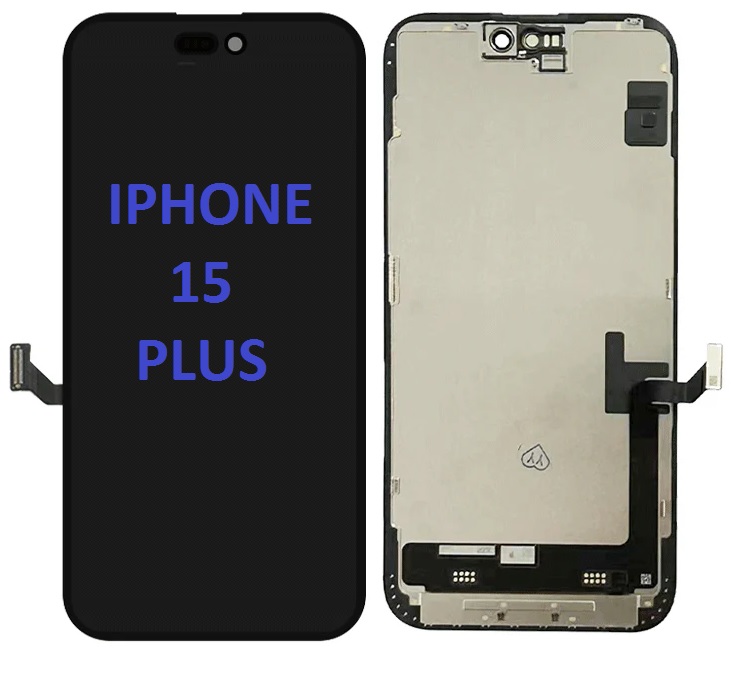
Replacing the screen on an iPhone 15 Plus is a delicate and precise process, which requires professional tools and expertise. If you’re thinking about replacing the screen yourself, it’s important to note that the process is complex and can potentially damage your device further if not done properly. That said, here’s an overview of the screen replacement process and the general steps involved:
1. Preparation
Before starting the replacement, gather the necessary tools:
- A replacement screen (ensure it’s compatible with iPhone 15 Plus)
- Pentalobe screwdriver (for removing screws)
- Tri-point screwdriver (for disassembling internal components)
- Plastic prying tools
- Suction cup tool
- Tweezers
- Spudger
- SIM card ejector tool
- Heat pad or hairdryer (for softening adhesive)
2. Power Off the iPhone
Before you do anything, ensure that the iPhone 15 Plus is powered off to avoid short-circuiting or damaging internal components during the repair process.
3. Remove the Screws
- Remove the two Pentalobe screws located near the charging port (these are the screws that hold the back cover in place).
- Use the suction cup to lift the screen from the body of the phone (gently place the suction cup on the bottom edge of the screen, ensuring a secure grip).
4. Opening the Device
Once the screws are removed:
- Use a plastic prying tool to gently separate the screen from the frame. Start at the bottom and work your way up, making sure not to damage the internal parts or cables.
- Important: Be aware of fragile flex cables inside the phone that are responsible for the display’s connection to the logic board.
5. Disconnect the Battery
Once the device is open, disconnect the battery to prevent any electrical damage during the screen replacement process. This typically involves removing screws on the shield that protects the battery connector and then disconnecting the battery.
6. Remove the Broken Screen
- Detach any remaining screws or connectors securing the broken screen to the device.
- You may need to soften the adhesive with a heat pad or hairdryer to make the process easier.
- Gently lift the screen from the body of the iPhone using prying tools.
7. Transfer Components (if necessary)
If your replacement screen does not come with certain components, like the front camera, earpiece speaker, or Face ID sensors:
- Carefully transfer them from the old screen to the new one.
- This step requires handling small parts with precision, so be sure to use tweezers or a small screwdriver for this task.
8. Install the New Screen
Once everything is ready, position the new screen carefully and attach it to the frame. Reconnect any cables you had previously disconnected, such as the screen’s flex cable and the battery.
9. Reassemble the iPhone
- Secure the components in place with the screws you had removed earlier.
- Double-check that everything is correctly aligned and attached before sealing the device back up.
10. Test the New Screen
Before fully sealing the phone, power it on and test the new screen for functionality. Check for:
- Touchscreen responsiveness
- Display brightness
- No dead pixels or discoloration
- Front camera and Face ID (if transferred)
11. Finalize the Repair
If everything is functioning properly, power off the device again, and finish assembling the phone by securing all screws. Press the screen down into place to ensure a snug fit.
12. Power On and Verify
Once everything is sealed up and the iPhone is powered on, verify that the screen is working as expected. Ensure that the display is responsive, and test the functionality of Face ID and the front camera.
Professional Replacement
If you are not comfortable performing this repair yourself, it is advisable to take the device to an Apple Store or an authorized service provider. Apple’s official screen replacement costs typically range from $299 to $349 for the iPhone 15 Plus, depending on warranty status and AppleCare+. If the device is under warranty, you may also qualify for a free or discounted replacement if the screen damage was due to manufacturing defects.
If you decide to go with a third-party repair shop, prices might be cheaper, but the quality of parts and service could vary.
Important Notes
- Apple Warranty: Replacing the screen at an unauthorized service provider or by yourself could void the warranty or AppleCare+ coverage. Always check with Apple before opting for third-party repairs.
- Genuine vs. Third-party Parts: Make sure that the replacement screen is genuine or of high quality to avoid issues like screen discoloration, poor responsiveness, or other display defects.